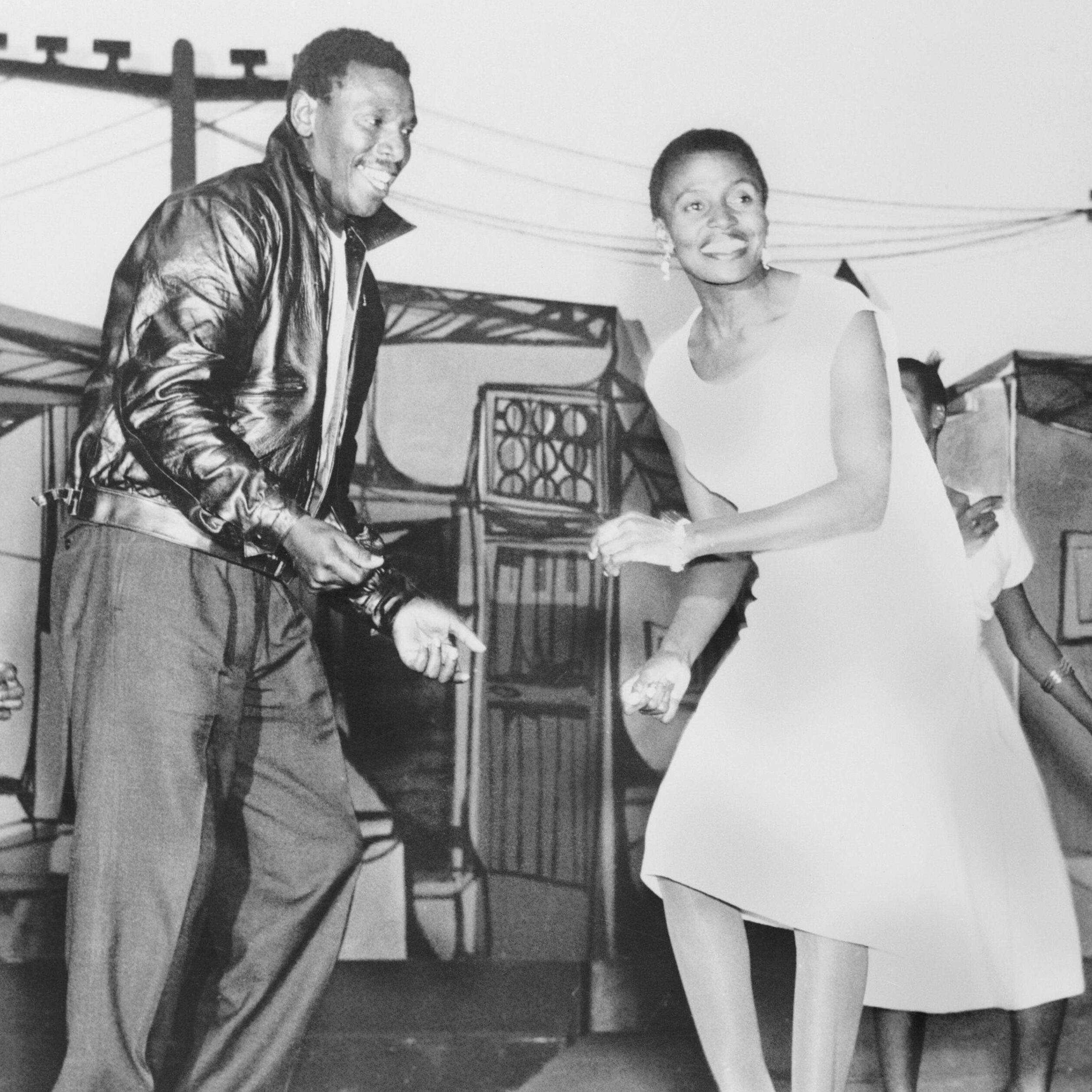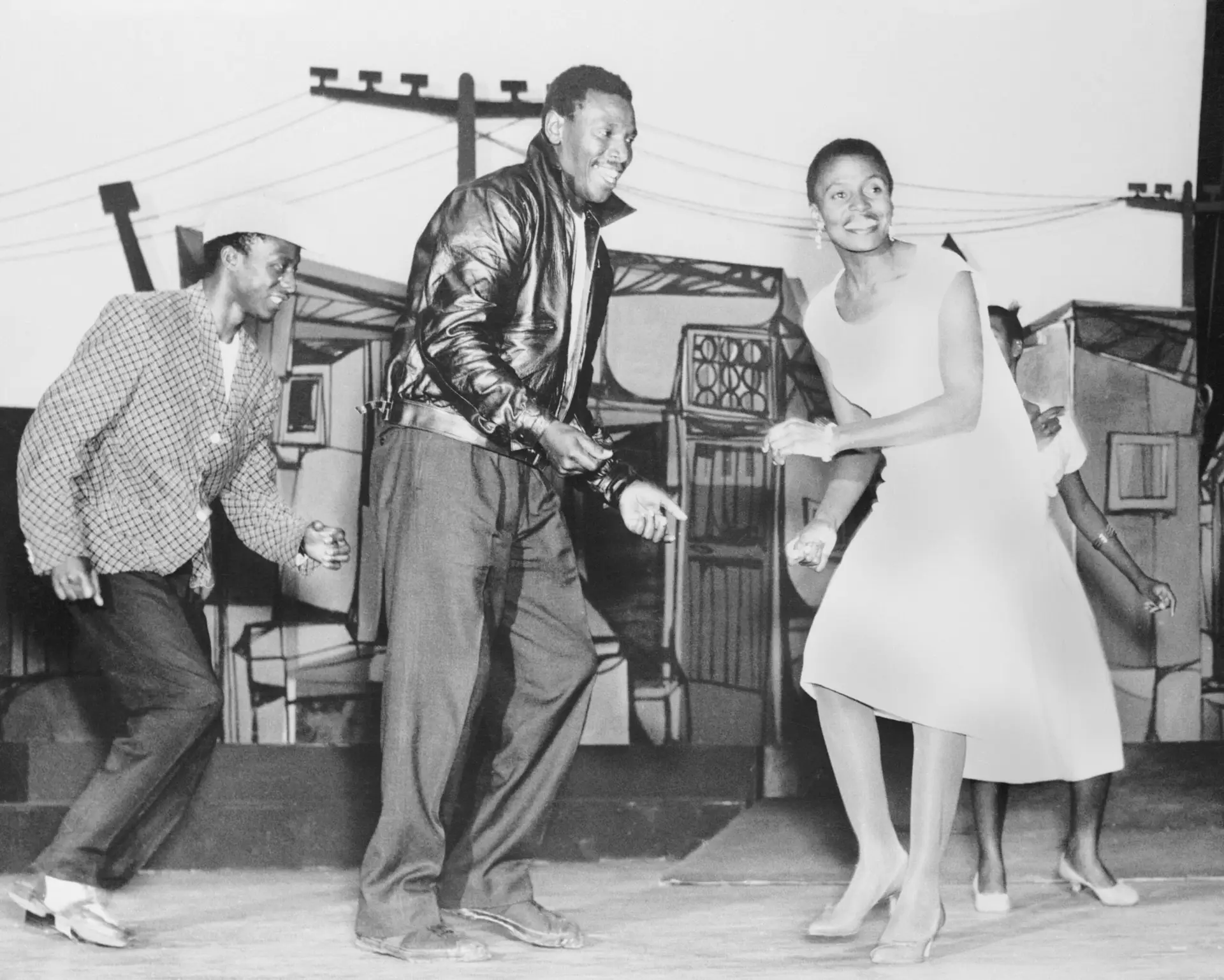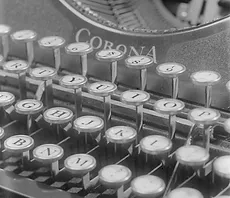Photo by Bettmann Archive/Getty Images
In 1959, audiences accustomed to segregated performance spaces gathered in an integrated venue and watched a musical that took their country by storm. Telling the story of a black boxer who was denied his place as a champion and eventually sank into crime, it played to packed houses for weeks on end. Those who weren’t lucky enough to get a ticket bought the LP; anybody who was anybody owned it.
The country was South Africa, and the musical was King Kong. Audiences were greeted by scenes like the one in this photograph of Miriam Makeba and Nathan Mdelele dancing and singing. So inspiring was their energy that, by the end of the show, almost all audience members were dancing in the aisles.
The production of King Kong was an unlikely story: it was racially mixed, with white producers and directors and a black cast. It told the story of Ezekiel “King Kong” Dlamini, a black South African heavyweight who was known for his size as well as a boisterous personality in the arena.
Fact and fiction blur when discussing Dlamini: while the musical portrayed him as a tremendously skilled boxer whose career collapsed because the authorities wouldn’t let him fight overseas, the real Dlamini had only a short career and faced few opponents.
Ultimately, he went to prison for the murder of his girlfriend and died there in 1957 under mysterious circumstances. But in the rapidly growing Johannesburg of the 1950s and the black cultural hub of Sophiatown, he had been a visible and memorable personality.
South Africa in the 1950s also was undergoing a jazz renaissance, especially among black South Africans. Groups like the Manhattan Brothers and the Harlem Swingsters, singers like Miriam Makeba, or instrumentalists like Kippie Moeketsi and Hugh Masekela all made music, but within the confines of apartheid.
The Union of Southern African Artists (USAA) was a progressive attempt to create a multiracial organization for musicians that would help blacks specifically; it was led primarily by whites but helped to organize events, negotiate contracts, and raise money. From there they began hosting shows such as Township Jazz, and, shortly after Dlamini’s death, USAA began working to create a musical about him.

Written as a jazz opera in the vein of Porgy and Bess, King Kong was produced under exceptionally difficult circumstances. Even showing up to practice was difficult because of the pass system: the producers eventually had to request special passes from the city government so that actors could reliably make it to rehearsal. Members of the cast recalled that even though the white production staff was very progressive, they nevertheless occupied all of the leadership positions.
The cast was a who’s who of black South African musicians and performers. Members of the Manhattan Brothers played different roles, including the title role by Nathan Dambuza Mdlele. Miriam Makeba played King Kong’s girlfriend. Luminaries of South Africa’s jazz scene were in the pit: trumpeter Hugh Masekela, trombonist Jonas Gwangwa, pianist Sol Klaatse, and saxophonist Kippie Moeketsi, among others
When the play opened at Wits University’s Great Hall (the only integrated venue in all of Johannesburg), the reaction was ecstatic. Both white and black South Africans loved the show. While the show was not explicitly critical of apartheid, white critics noted even at the time that the show challenged assumptions about black creativity.
Black musicians such as Miriam Makeba went from being unknown among most South African whites to being thronged by autograph seekers. Some even hoped that it would be the start of a new artistic movement uniting African and European culture. This effusive praise was in and of itself critical of apartheid, undermining the idea that South Africa’s different groups had to be kept apart from each other.
In some ways, King Kong was a final burst of optimism about South Africa’s possible trajectory. Debuting in 1959, it offered a hope that a multiracial society was close at hand and that apartheid might soon crumble. The reality was tragically different.
Within a year, police at Sharpeville opened fire on peaceful protesters and killed 69 people. The African National Congress and Pan-African Congress were all banned and its leaders either arrested or driven into exile. They faced long years of isolation and struggle.
The cast and producers of King Kong faced many of the same dilemmas. A few such as Miriam Makeba, Hugh Masekela, and Jonas Gwangwa went to the United States and managed to launch high-profile careers. Others went to London; a 1961 production of King Kong in London ended with close to two dozen cast members staying behind rather than going back to South Africa.
They struggled to launch music careers: insular British society excluded foreigners from the musicians’ union and acting work was often limited. Even the composer of King Kong, Todd Matshikiza, struggled to find enough work while living in Britain. In both cases, the King Kong exiles spent decades away from friends and family members.

Photo by John Franks/Keystone/Getty Images
For those who stayed in South Africa or returned from the 1961 troupe—like the three cast members pictured above at Gatwick airport on their way home—apartheid made it increasingly difficult to make music and art. Forced removals and the destruction of neighborhoods such as Sophiatown in Johannesburg or District Six in Cape Town destroyed communities.
Work as a musician was spotty and the pay was bad. Alto saxophonist Kippie Moeketsi had been described as South Africa’s Charlie Parker, but despite continuing to record, his later life was afflicted by alcoholism, and he died in poverty in 1983. Brilliant music continued to be made in South Africa, but it would not get its due internationally until much later.

Learn More:
Gwen Ansell. Soweto Blues: Jazz, Popular Music, and Politics in South Africa. Continuum, New York, NY: 2004.
Tyler Fleming. Opposing Apartheid on Stage: King Kong the Musical. University of Rochester Press, Rochester, NY: 2020.
Nicholas Grant. Winning Our Freedoms Together: African Americans and Apartheid, 1945-1960. University of North Carolina Press, Chapel Hill, NC: 2017.





